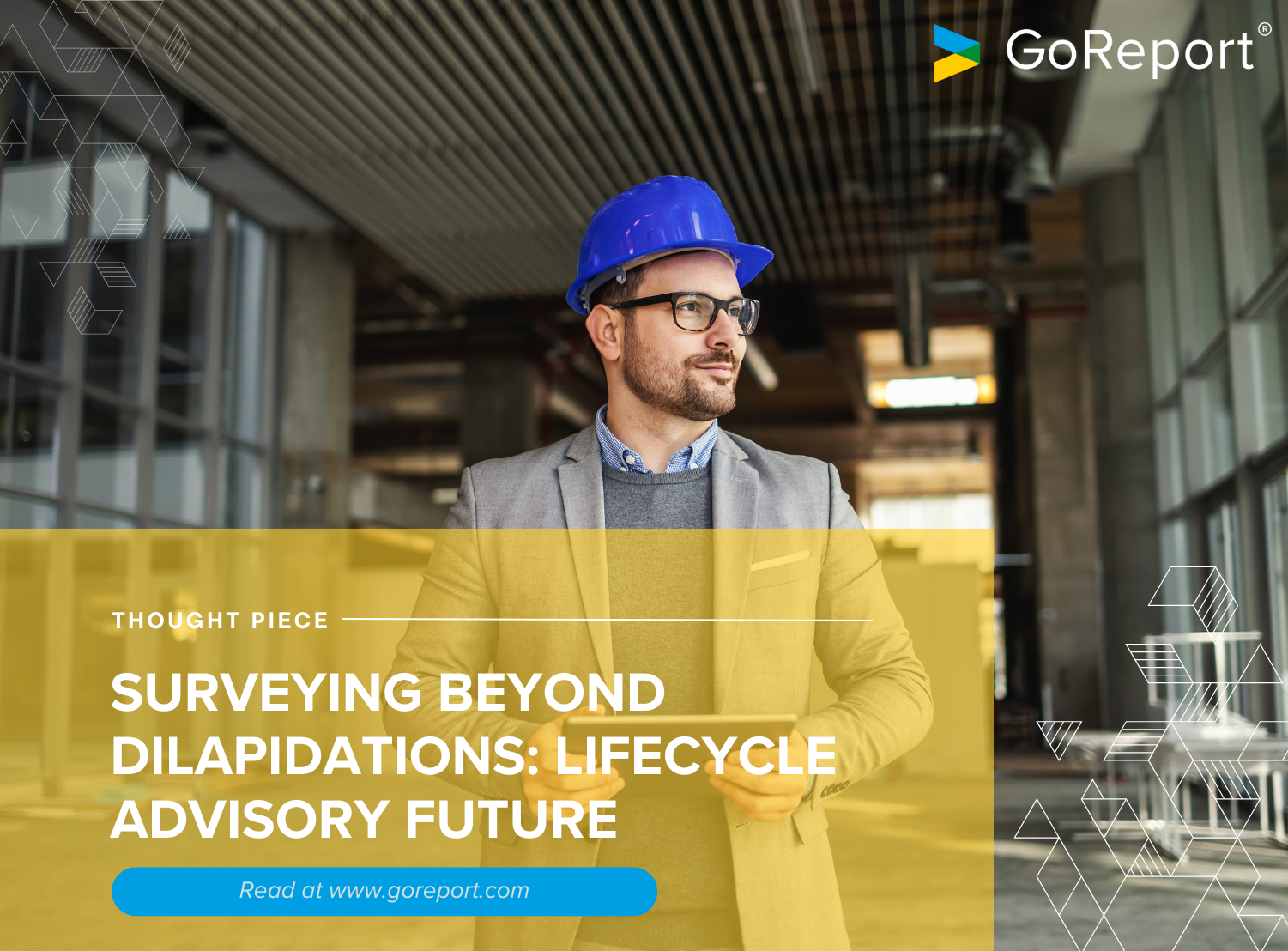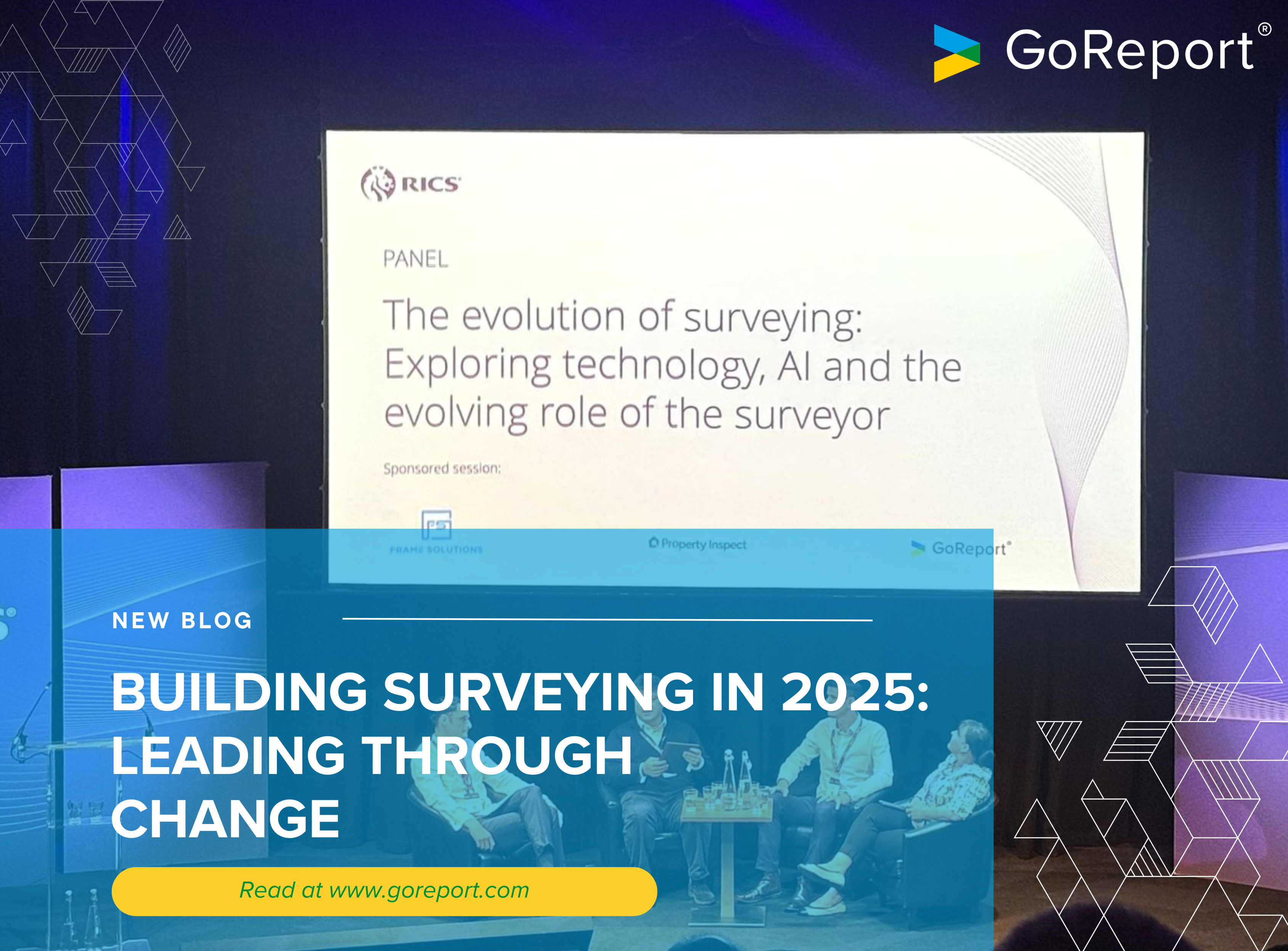Surveying Beyond Dilapidations: Lifecycle Advisory Future

For decades, the dilapidations report has been the surveyor’s calling card. It’s the document that decides who pays for what, sets the tone at the end of a lease, and often defines the surveyor in the eyes of clients: the defect spotter, the cost allocator, and the technical referee.
But here’s the reality: the market has moved on.
With ESG obligations tightening, Net Zero deadlines looming, and investors increasingly concerned with the whole-life performance of their assets, clients want more than an end-of-lease battle. They want clarity about the long-term, and to know not just what’s broken but what’s coming. They want foresight, not just hindsight.
That shift demands something bigger from surveyors. You’re role will go beyond defect spotters with sharp pencils, but as lifecycle advisors with data, insight, and strategic foresight.
Dilapidations Will Never Die, But They’re No Longer Centre Stage
Let’s be clear: dilapidations aren’t going away. The disputes, the negotiations, the careful parsing of leases – all of that remains vital. Dilapidations may have taken centre stage in the past, but today they’re only one chapter in a broader narrative.
The profession is moving from a reactive stance to a proactive, ongoing role: tracking building performance, advising on ESG compliance, planning maintenance spend, and helping clients manage risk over decades.
It’s a subtle but fundamental reframe. For surveyors, it raises a difficult but necessary question: if we cling to a dilapidations-first identity, do we risk being left behind by clients who want more?
From Defect Spotter to Lifecycle Advisor
Repositioning isn’t just about vocabulary. It’s about reimagining the surveyor’s role.
Traditionally:
-
You catalogue defects.
-
You reference the lease.
-
You calculate costs.
-
You defend or challenge liability.
In the lifecycle model:
-
You monitor performance over time.
-
You forecast risks and costs.
-
You connect repairs with ESG strategy.
-
You act as an advisor, not just a witness.
Think of it like healthcare. The traditional surveyor is comparable to the A&E doctor, called in when something has gone badly wrong. The lifecycle advisor is the GP, tracking the patient’s records, flagging risks early, and helping them stay healthy. Both roles matter. But one builds trust and longevity; the other waits for crisis.
The Cultural Shift: Harder Than the Technical
We have the tools, the data and the models. What we don’t yet have is the cultural shift
Surveyors have long been trained to think transactionally: instruction received, inspection done, report delivered. Lifecycle thinking demands something different: relationships that stretch across years, with clients expecting strategic advice and ongoing dialogue.
That’s uncomfortable for many. It shifts the fee model. It asks for a different style of communication, one that is less adversarial and more advisory. It calls for collaboration across disciplines, not solitary site visits, and it challenges surveyors to expand their professional identity beyond defects and disputes.
What Lifecycle Practice Looks Like
To ground this in reality, here’s what a lifecycle-focused surveying practice might deliver:
-
Rolling maintenance roadmaps that spread cost across a decade, not just a lease term.
-
Carbon impact reporting linked directly to repair and refurbishment options.
-
Digital condition datasets that clients can revisit and update – no more static, forgotten PDFs.
-
Cross-disciplinary coordination with engineers, sustainability specialists, and asset managers.
-
Client education that explains, in plain English, why long-term planning saves both money and carbon.
In this model, dilapidation schedules are still produced, but they’re framed as part of a continuous cycle – not the final word.
Is the Profession Ready?
The honest answer: not uniformly.
Some practices are already using digital platforms, repositioning themselves as long-term advisors, and charging accordingly. Others are still tied to the rhythms of dilapidation disputes. The danger is that the gap widens, leaving parts of the profession pigeonholed as “the ones you call when something breaks” while others claim the strategic ground.
The opportunity is equally clear. By embracing lifecycle thinking, surveyors move beyond keeping pace: they lead, they reset client expectations, and they protect their practices from commoditisation. 
Questions We Can’t Afford to Ignore
Shifts like ESG, Net Zero, and lifecycle asset management aren’t abstract – they land squarely on the surveyor’s desk. Yet too often, our conversations still circle around defect schedules and lease-end disputes. To remain relevant, we have to confront the bigger issues head-on.
- Are we pricing our services for transactions or for relationships?
- Are our reporting formats built for disputes or for ongoing asset management?
- Do our teams understand carbon, data, and long-term risk or only defect schedules?
- Are we comfortable being advisors in boardrooms, not just inspectors on site?
The answers to these questions will decide whether surveyors own the lifecycle space or allow it to pass to others. Those who reshape how they price, report and engage with clients will position themselves as trusted guides for long-term building performance. Those who remain tied to transactional thinking and dispute-driven outputs may find the opportunity taken by sustainability consultants, data specialists or insurers. The profession has a narrow window to redefine its role. Step into it, and you help shape the market. Miss it and you risk being pushed to the margins.
A New Identity for Surveyors
The profession has always been shaped by the reports it produces. For years, the dilapidations schedule was that defining artefact: technical, precise, sometimes contentious, but undeniably central.
Now, the defining artefact could be something else: a lifecycle roadmap, a digital condition dataset, or a long-term advisory relationship.
That’s not a loss, but an opportunity. To move from being seen as defect spotters to being recognised as lifecycle advisors. To replace hindsight with foresight. To make surveyors indispensable not just at the end of the lease, but at every stage of the asset’s life.
The shift is already underway. The question is whether we’ll lead it, or lag behind.
Lifecycle thinking doesn’t have to stay theoretical. With digital reporting tools, surveyors can turn every inspection into a dataset that lives beyond a single report. You can reposition yourself as a lifecycle advisor easily by embedding continuity into your practice. If you’d like to see how it works in reality, you can book a free demo with GoReport.
FAQs
What does “lifecycle surveying” mean?
It means looking at the building’s performance and costs across its whole life, not just at the end of a lease. It includes planned maintenance, carbon performance, and long-term risk.
Does this make dilapidations redundant?
Not at all. Dilapidations remain vital, but they’re repositioned as one step in a larger, ongoing cycle.
Why should surveyors reposition as lifecycle advisors?
Because clients are demanding it. ESG, Net Zero, and whole-life cost pressures mean clients need foresight, not just dispute resolution.
What tools support this shift?
Digital data capture, condition monitoring, and reporting platforms that allow surveyors to provide continuous datasets, not one-off documents.
How does this affect fees?
Lifecycle work requires new models (potentially subscription-style, advisory retainers, or phased programmes) rather than simple per-report fees.






